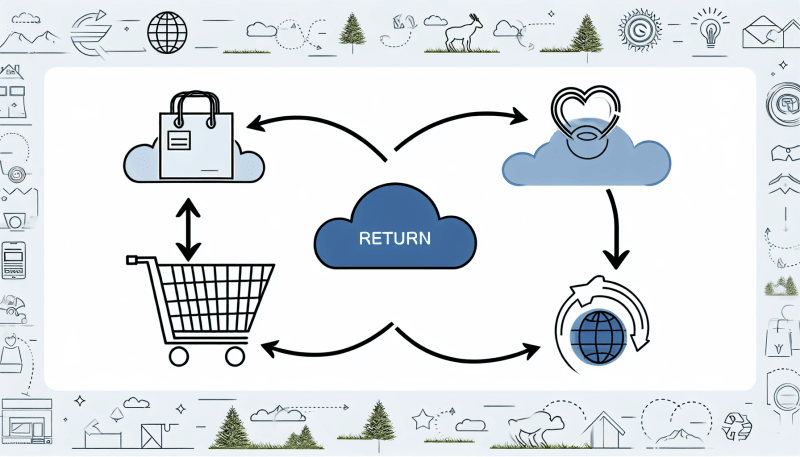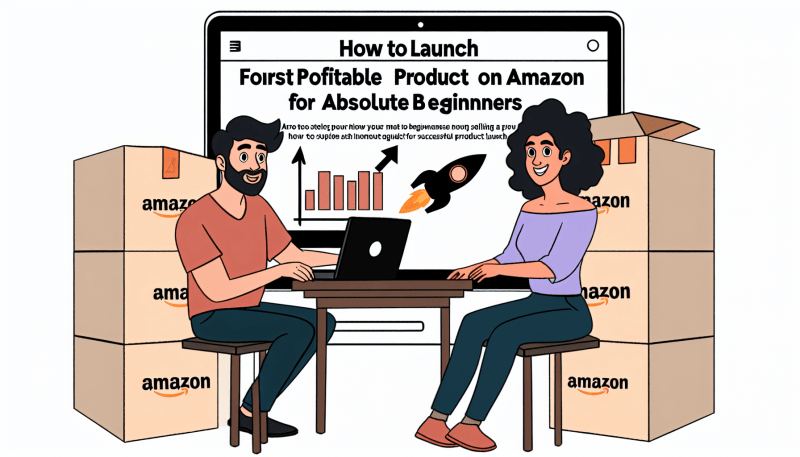Stepping into the world of Amazon selling can seem like navigating through a vast ocean, with its own set of challenges and rewards. As the platform continues to dominate the e-commerce space, new sellers flock in hopes of capturing a slice of the lucrative market. However, without proper guidance, many face setbacks that can dampen their journey to success. This article aims to provide you with actionable insights and strategies to avoid common pitfalls as a new Amazon seller, laying down a path towards a thriving online business.
Understanding Amazon’s Complex Algorithm
Amazon’s A9 algorithm might seem like a mystery box, especially to new sellers. It's a sophisticated engine that drives product rankings based on a plethora of factors including price, availability, selection, and customer experience. To make your offerings stand out, you must:
- Optimize product listings: Use relevant keywords in your titles, descriptions, and backend search terms. High-quality images and clear, concise descriptions can also improve visibility and click-through rates.
- Focus on customer satisfaction: Garner positive reviews and high ratings by ensuring fast delivery and prompt customer service. Amazon heavily favors listings that achieve and maintain high customer satisfaction scores.
- Keep prices competitive: Monitor your competitors’ pricing strategies closely and adjust yours accordingly. Utilize Amazon’s pricing tools to stay competitive without sacrificing profit margins.
Navigating Inventory Management
Efficient inventory management is crucial for maintaining a positive selling experience on Amazon. Overstocking can lead to high storage fees, whereas understocking may result in lost sales and negatively impact your rankings. To avoid these pitfalls:
- Leverage Amazon’s inventory tools: Use the platform’s forecasting and tracking features to understand sales velocity and plan your inventory accordingly.
- Consider dropshipping or FBA: Fulfillment by Amazon (FBA) can help manage logistics, but it's essential to calculate if the fees are cost-effective for your business model. Alternatively, dropshipping can reduce inventory risks, though it requires meticulous supplier selection and management.
Avoiding Account Suspension
Account suspension is a nightmare for any Amazon seller. Violations of Amazon’s policies, whether intentional or not, can lead to account suspension. To safeguard your account:
- Strictly follow Amazon’s rules: Regularly review and adhere to Amazon’s selling policies. Ignorance is not an excuse in the eyes of the platform.
- Maintain high performance: Monitor your Seller Central account for metrics like order defect rate, pre-fulfillment cancel rate, and late shipment rate. Meeting or exceeding Amazon’s performance targets is crucial.
- Address violations promptly: If you receive a notification about a policy violation, address it immediately. Submit a plan of action if required, detailing how you intend to resolve the issue and prevent future occurrences.
Mastering Marketing and Promotion on Amazon
With millions of products listed, standing out on Amazon requires more than just a good product. You need to master marketing and promotional strategies to enhance visibility and drive sales. This includes:
- Using Amazon’s advertising tools: Invest in Sponsored Products, Sponsored Brands, and Sponsored Display ads to increase product visibility to highly targeted customers.
- Running promotions: Discounts, coupons, and deals can entice customers and boost sales. These promotions can also help in clearing out excess inventory efficiently.
- Optimizing for Amazon SEO: Just like optimizing a website for Google, understanding and leveraging Amazon SEO practices can significantly improve your product’s search ranking and visibility.
Understanding and Managing Fees
Amazon charges sellers a variety of fees, which can quickly eat into profits if not carefully managed. It’s crucial to understand and account for:
- Referral fees: Depending on your product category, Amazon charges a percentage of each sale as a referral fee. Familiarize yourself with the fee structure of your category.
- Fulfillment fees: If you’re using FBA, you need to account for fulfillment and storage fees. Ensure that your pricing strategy can absorb these costs without significantly affecting your margins.
- Additional costs: Other costs, including shipping to Amazon’s fulfillment centers, returns processing, and long-term storage, should also be factored into your financial planning.
How to Outmaneuver Common Pitfalls as a New Amazon Seller: Insider Tips for Success
Entering the Amazon marketplace is like embarking on a journey through uncharted territories. The potential for success is enormous, yet so are the risks of stumbling without a map. This comprehensive guide is your compass to navigating the complexities of Amazon selling, helping you to avoid common pitfalls and stride confidently towards your goals.
Understanding Amazon’s Complex Algorithm
Deciphering Amazon’s A9 algorithm is key to ensuring your products gain the visibility they deserve. The algorithm prioritizes listings that offer the best customer experience, as indicated by several critical factors:
- Optimize product listings: Enhance your titles, descriptions, and backend keywords with customer-focused language and relevant search terms. Quality images and detailed descriptions not only inform but also attract potential buyers.
- Focus on customer satisfaction: Stellar customer service and quick delivery times contribute significantly to obtaining positive feedback and high ratings, favoring your standing in search results.
- Keep prices competitive: Use Amazon’s tools to monitor and adjust your pricing strategy, ensuring you remain competitive while safeguarding your profit margins.
Navigating Inventory Management
Adept inventory management is pivotal in cementing your success on Amazon. Balancing between too much and too little stock requires a careful approach:
- Leverage Amazon’s inventory tools: Take advantage of forecasting tools provided by Amazon to manage your inventory efficiently, avoiding overstock and stockouts.
- Consider dropshipping or FBA: Evaluate the benefits of using Fulfillment by Amazon to handle logistics versus the lower risk profile of dropshipping. Each has its pros and cons depending on your business model and product type.
Avoiding Account Suspension
Preventing account suspension is crucial for uninterrupted selling. Amazon’s policy compliance is non-negotiable, requiring vigilance and proactive management:
- Strictly follow Amazon’s rules: Familiarize yourself with and adhere to Amazon’s extensive selling policies to avoid unintended violations.
- Maintain high performance: Diligently monitor your performance metrics in Seller Central to ensure you meet Amazon’s quality standards.
- Address violations promptly: Should you be notified of any violations, act swiftly to rectify the issue and communicate your corrective action plan to Amazon.
Mastering Marketing and Promotion on Amazon
To distinguish yourself amid the vast array of products on Amazon, effective marketing and promotional strategies are indispensable:
- Using Amazon’s advertising tools: Elevate your product's visibility through Sponsored Products and Brands, targeting shoppers actively searching for items like yours.
- Running promotions: Implement discounts and special offers to attract more customers and increase sales volume, which can also aid in managing your inventory levels.
- Optimizing for Amazon SEO: Invest time in understanding the intricacies of Amazon SEO to enhance your product’s search ranking through strategic keyword use and optimization techniques.
Understanding and Managing Fees
Comprehension and strategic planning around Amazon’s fee structure are fundamental to preserving your profitability:
- Referral fees: Different categories have different referral fees. Knowing the specifics for your category allows you to price your products knowledgeably.
- Fulfillment fees: For those utilizing FBA, it’s critical to include fulfillment and storage fees in your cost calculations to maintain healthy margins.
- Additional costs: Account for shipping to warehouses, handling returns, and potential long-term storage fees in your financial planning to avoid any surprises.
Final Words of Wisdom
Becoming a successful Amazon seller requires patience, persistence, and a willingness to learn. By mastering the complexities of the platform, understanding your costs, and putting the customer first, you can build a profitable business that stands the test of time. Stay adaptable, keep informed of Amazon’s ever-evolving landscape, and always look for ways to improve your offerings and operations. With these insider tips, you’re well on your way to becoming an Amazon success story.






